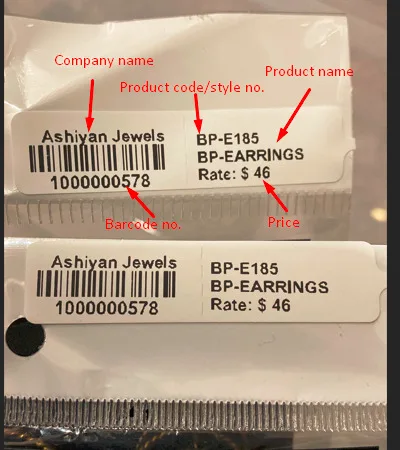Inventory planning is a necessary evil for small businesses. If done correctly, it can help you avoid costly errors and stockouts, while also maximizing your profits. In this article, we’ll share 4 inventory planning techniques that every SMB needs to know.
The Importance of Inventory Planning
Every small business owner knows that inventory is a crucial part of running a successful operation. However, what many don’t realize is that inventory planning is just as important as the actual inventory itself.
Inventory planning is the process of determining how much inventory a business needs to maintain, and it is a vital part of running a smooth and efficient operation. There are a number of factors that need to be taken into account when doing inventory planning, such as sales volume, lead time, and safety stock levels.
Without proper inventory planning, businesses can end up with too much or too little inventory on hand. Too much inventory ties up valuable resources and can lead to storage and other costs. Too little inventory can result in lost sales and customer frustration.
The bottom line is that proper inventory planning is essential for any small business owner who wants to run a successful operation. By taking the time to plan ahead, you can avoid the costly mistakes that can come from having too much or too little inventory on hand.
Inventory Planning Basics
Inventory planning is the process of ensuring that a company has the right amount of inventory on hand at all times. This can be a difficult task, as too much inventory can tie up cash and lead to storage problems, while too little inventory can lead to stock outs and lost sales.
Before diving into different inventory planning techniques, it’s important to understand some basics.
Inventory planning is the process of determining the right level of stock to maintain to meet customer demand. This involves taking into account factors such as sales history, lead time, and safety stock. Getting the right level of inventory can help businesses save money and avoid stock outs.
There are two main types of inventory: finished goods and raw materials. Finished goods are items that are ready to be sold to customers. Raw materials are items that need to be used in the production of finished goods.
There are several methods businesses can use to forecast demand, including trend analysis, regression analysis, and causal analysis. Once demand has been forecasted, businesses can use this information to create an inventory plan.
Inventory Planning Techniques
There are a number of different inventory management techniques that businesses can use, including just-in-time (JIT) inventory management, economic order quantity (EOQ), and inventory turnover. Each of these techniques has its own advantages and disadvantages that need to be considered when choosing which one to use.
1. One popular technique is known as the ABC analysis. This involves grouping items into three categories based on their importance. Items in category A are the most important and need to be given the most attention. Those in category B are less important but still need to be monitored, while those in category C can be given less attention.
ABC analysis is a technique that categorizes inventory based on how important it is to the business. Items that are considered “A” items are the most important and make up a small percentage of inventory. “B” items are less important and make up a larger percentage of inventory. “C” items are the least important and make up the largest percentage of inventory. This technique can help businesses focus on stocking the most important items first.
2. Another common technique is known as just-in-time (JIT) inventory management. Just in time (JIT) inventory planning is a technique that focuses on reducing waste by only stocking the amount of inventory that is needed at any given time. This can help businesses save money by not overstocking their shelves with products that may not sell. 3. Last, businesses can also use a technique known as the economic order quantity (EOQ). This technique focuses on finding the optimal order quantity that will minimize the cost of inventory. The EOQ formula takes into account factors such as the cost of ordering and the cost of holding inventory.
3. Economic order quantity (EOQ) is a technique that determines the optimal order quantity for each item in inventory. This technique takes into account factors such as storage costs, ordering costs, and carrying costs. By determining the optimal order quantity, businesses can minimize their inventory costs.
4. Last, businesses can also use a technique known as the inventory turnover ratio. This ratio measures how often a business sells and replaces its inventory. A high turnover ratio indicates that a business is selling its inventory quickly, while a low turnover ratio indicates that a business is not selling its inventory quickly enough.
Inventory planning is a critical part of running a business. By understanding the basics and choosing the right inventory management technique, businesses can save money and avoid stock outs.
Inventory planning tips to maximize your success
1. Keep an accurate count of your inventory levels at all times. This will help you avoid overstocking or running out of products.
2. Plan your inventory levels based on sales data. This will help you determine how much inventory you need to keep on hand.
3. Use a software system to track your inventory levels. This will help you stay organized and efficient.
4. Review your inventory levels regularly. This will help you identify any areas that need improvement.
Conclusion
Inventory planning is a critical part of running a business. There are a few basic principles that every company should keep in mind when planning their inventory. First, they should always have enough inventory on hand to meet customer demand. Second, they should try to keep inventory levels as low as possible to save on storage costs. And third, they should have a good system in place for tracking inventory levels so that they can make adjustments as needed. No single inventory planning technique is right for every business. The best approach is to experiment with different techniques and see which one works best for your company.



